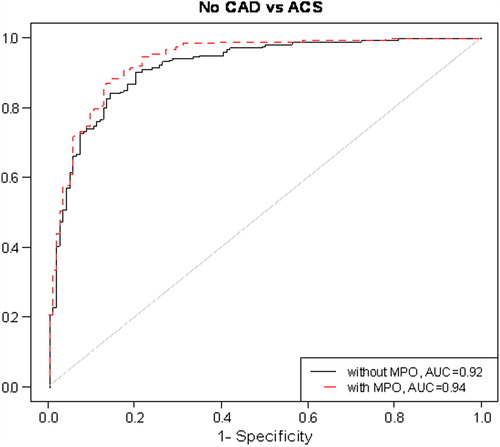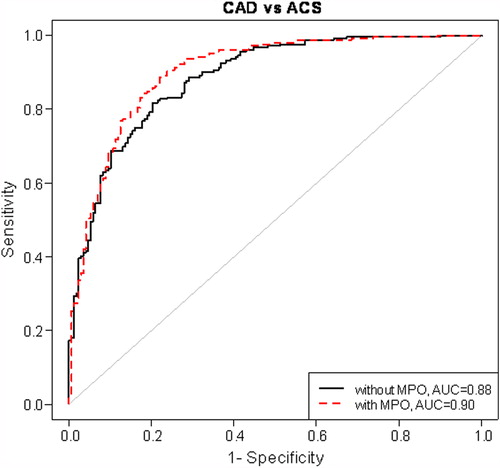Figures & data
Table I. Clinical characteristics of the study groups.
Table II. Biochemical characteristics of the study groups.
Table III. Association of biomarkers with acute coronary syndrome (ACS) when compared to subjects with normal coronary artery (NCA) and stable angina pectoris (SAP).a.
Figure 1. Risk discrimination of acute coronary syndrome (ACS) by receiver-operating characteristic curve. Models have been adjusted for sex, body mass index, hypertension, smoking, and the use of β-blockers, aspirin, and statins. CAD = coronary artery disease; MPO = myeloperoxidase; AUC = area under curve.

Figure 2. Risk discrimination of acute coronary syndrome (ACS) by receiver-operating characteristic curve. Models have been adjusted for hypertension, smoking, previous myocardial infarction and the use of β-blockers, aspirin, and statins. CAD = coronary artery disease; MPO = myeloperoxidase; AUC = area under curve.
